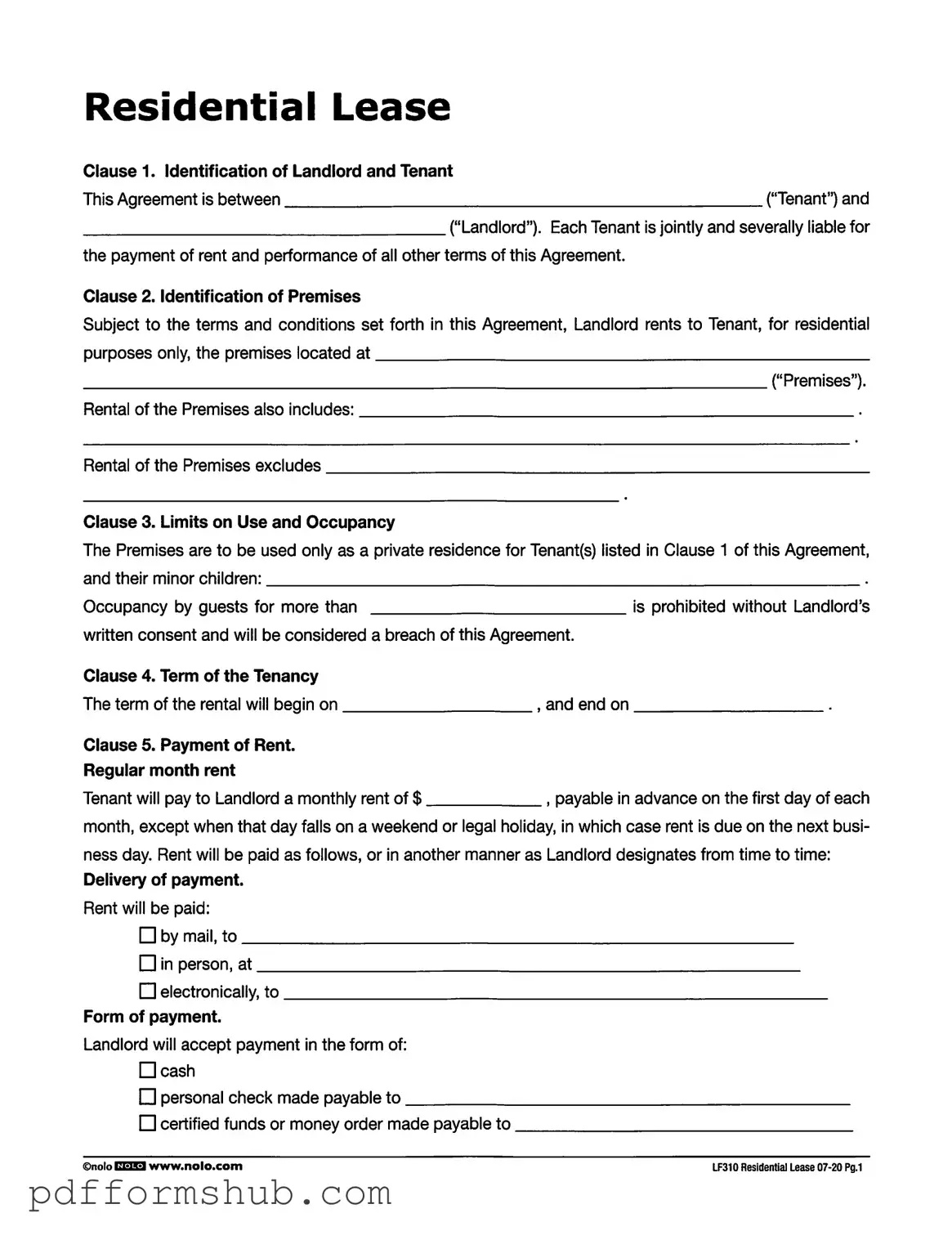The LF310 Residential Lease form serves as a crucial document in the landlord-tenant relationship, outlining the rights and responsibilities of both parties. At its core, this form identifies the landlord and tenant, establishing who is involved in the rental agreement. It specifies the premises being rented, ensuring that the property is used solely for residential purposes by the listed tenants and their minor children. The lease sets clear terms regarding occupancy, stating that any guests staying beyond a certain time without consent may breach the agreement. Additionally, it details the rental payment process, including due dates, accepted payment methods, and consequences for late payments. A security deposit is also required upon signing, with guidelines on its return after the tenant vacates the property. Utilities are addressed, indicating which party is responsible for payment, while restrictions on subletting and assignment are firmly established to protect the landlord's interests. Overall, the LF310 form aims to create a clear understanding between landlords and tenants, fostering a respectful and legally sound rental experience.
